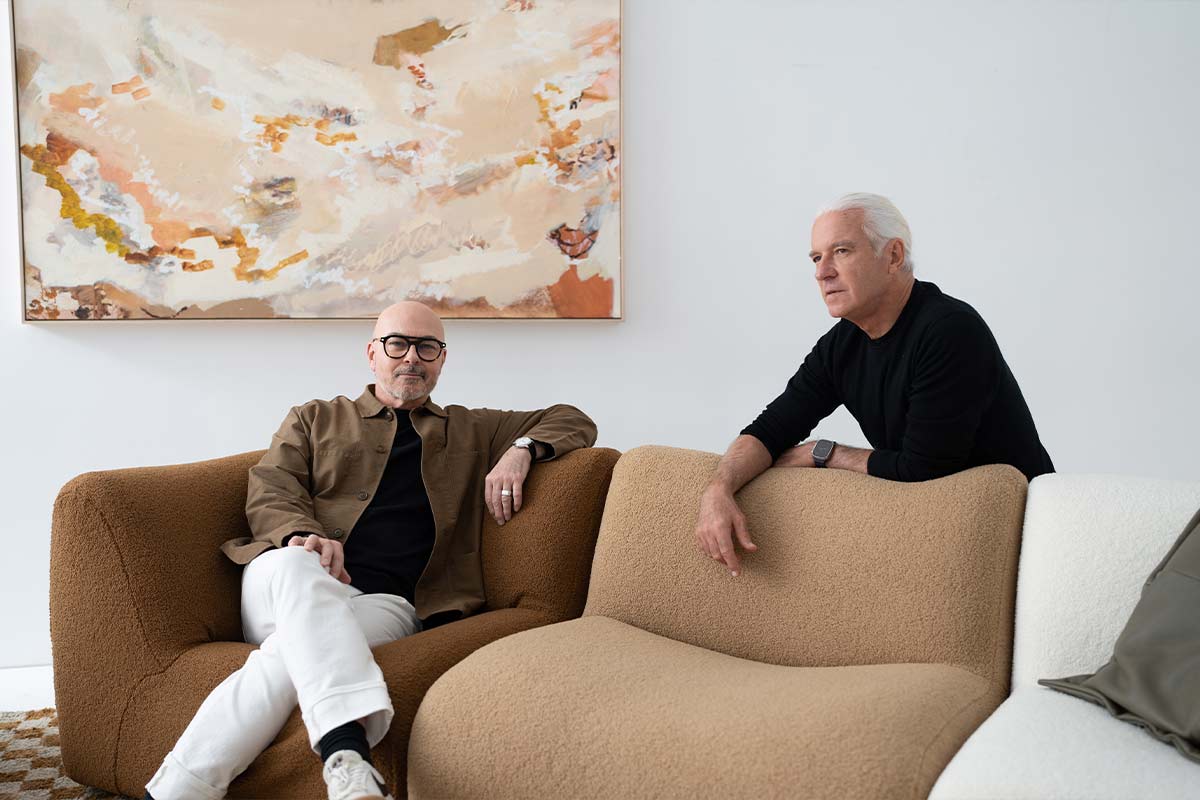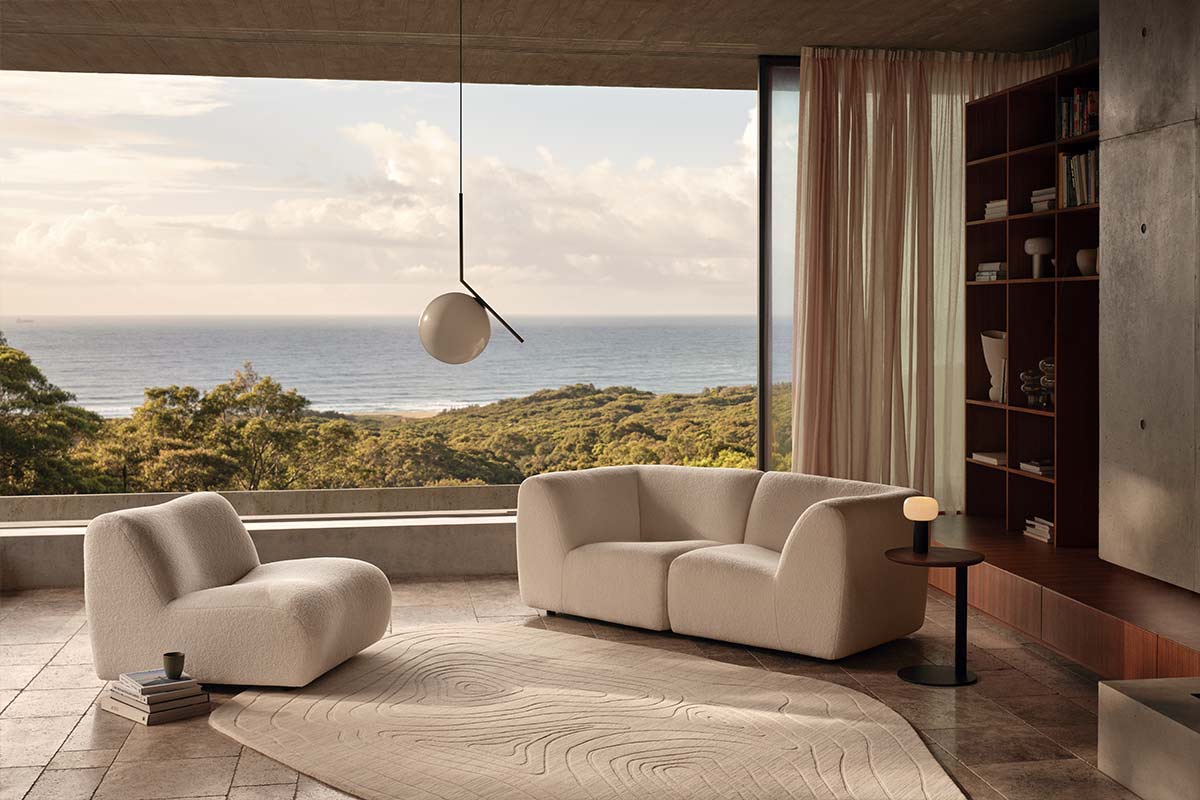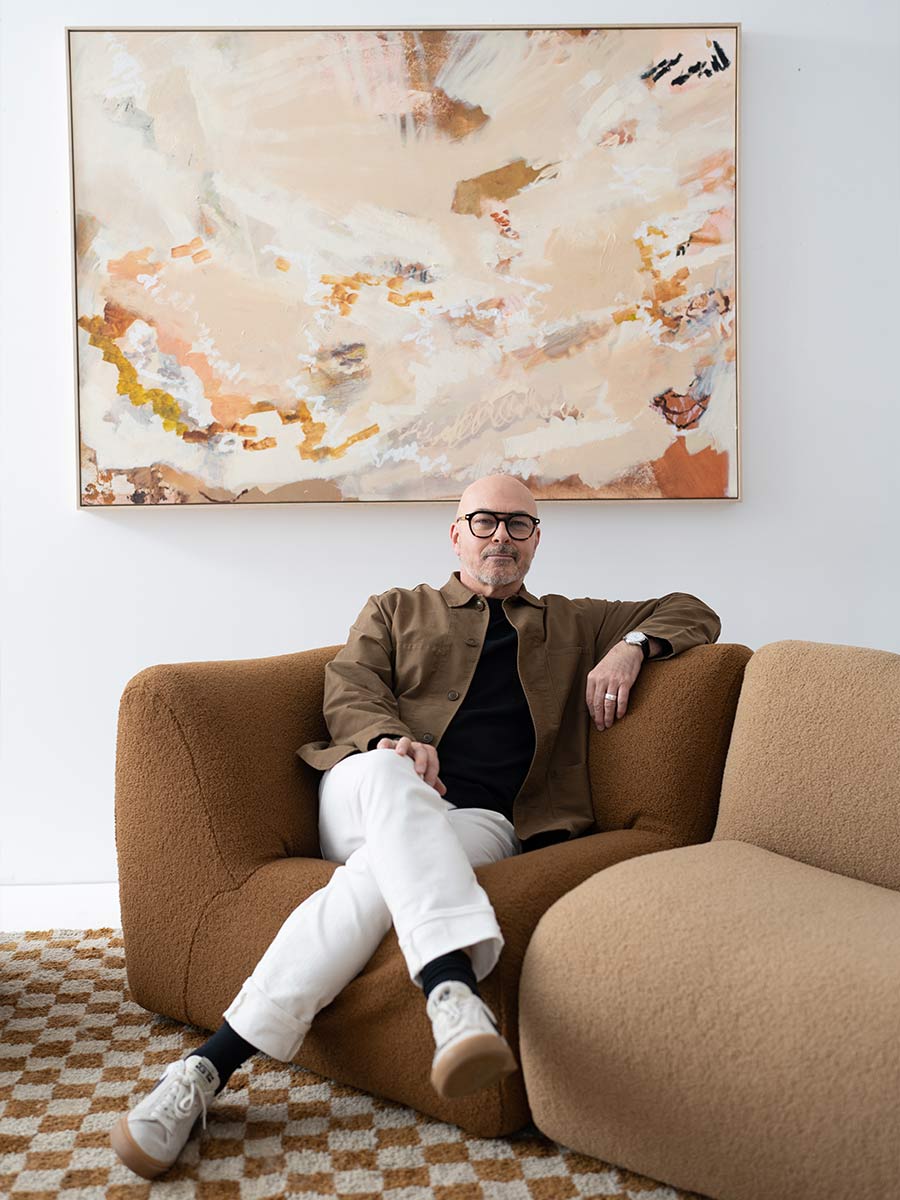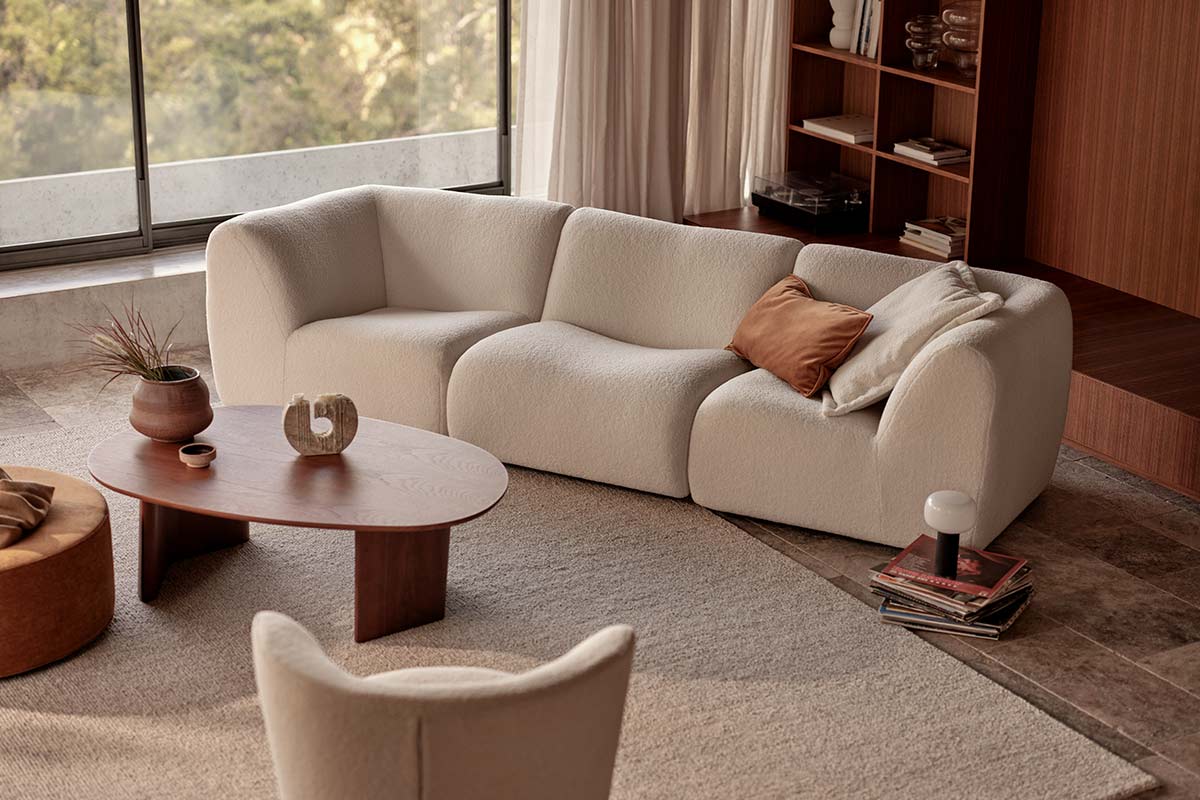Neale Whitaker: 1970s design and back again

1977 was a difficult year. No matter how long I stood in front of the mirror with my Pifco hairdryer, I could not get my quiff like Tony Manero’s. Tony was - of course - the white-suited stud with the swagger and boogie shoes played by John Travolta in Saturday Night Fever, which hit cinema screens that year. To be honest, I had the wrong type of hair, although - with wisdom bestowed by half a century of hindsight - my 15-year-old self should have been grateful for having hair at all.
But I digress. 1977 was also the year the original Star Wars movie landed, Fleetwood Mac released Rumours and a little-known start-up called Apple sold its first computer. In New York, Studio 54 threw open its doors, and ABBA arrived in Australia for that record-breaking concert tour. And in 1977 too, David King designed a sofa called the Award. Affordable, comfortable, undeniably groovy, and the precursor of an Australian brand that has outlived the disco era and every era since.

1970's influence
Given that by definition they were just ten short years, the 1970s punch well above their weight in terms of influence and legacy. Fifty years on, contemporary design is still influenced by aesthetic principles associated with that decade: space-age futurism (think Star Wars, Close Encounters) underpinned by a fascination with the elegance of the Art Deco era (think The Great Gatsby, The Sting). So much 70s design owed a debt to styles and colours popularised in the 20s. And now we’ve come full circle. In the 2020s, contemporary interiors are marked by a fusion of trends from both decades. The geometric shapes and curves popular now are pure 1920s; the rich velvets and smokey shades (browns, plums, purples, spices) recall both the 20s and the 70s. So it seems entirely logical that King Living should choose now to relaunch its original Award sofa as the 1977 Sofa, in homage not just to a specific year, but to an era that remains relevant and yes, cool.

Enduring style
So how does a sofa designed almost a half-century ago work seamlessly with modern interiors? The ongoing popularity of 70s design goes some way to explaining, but it’s worth discussing why designs from that decade endure. I believe it’s about simplicity and functionality. Sofas that came along in the 80s and 90s were heavily influenced by more formal, antique styles such as the bergere and banquette. I recall a deep-blue sofa in my own early-90s apartment that was terminally uncomfortable and so high backed it was like sitting in a booth. All angles and impact, it was the sofa equivalent of power dressing. 70s designs, on the other hand, were arguably less about status and more about comfort, functionality and longevity, which is why they resonate today. While I can’t envisage my 90s sofa in a contemporary setting (or the apricot-coloured, faux country-style monstrosity that preceded it in the 80s), I can actually imagine the classic lines of my parents’ low-rise, black leather 70s sofa working perfectly today.

Modular design
It was the 70s too that saw the emergence of modular furniture, designed to adapt to changing environments and lifestyles. Modular designs like the 1977 Sofa with detachable seating units and removable covers seem especially appropriate today, with societal and demographic trends (renters, upsizers, downsizers, multi-generational living, short-term accommodation) changing faster than at any other time in history. The 70s ethos of buying once and buying well - heirloom furniture designed to last a lifetime and beyond - was perhaps an early indication of future generations’ insistence on sustainability.
1977 Sofa
But as fashion experts love to tell us, things rarely come back in exactly the same way. Instead, they are adapted and improved for the demands of a new era and customer. While King Living’s relaunched 1977 Sofa might resemble its predecessor visually and aesthetically, its construction is very much of today. The integrity and spirit of the original design remain, but supported by the quality, manufacture and sustainability synonymous with King Living. Put simply, don’t be fooled by the retro vibe of the 1977 Sofa. The organic shape and sculptural curves recall the days of bean bags, macrame and conversation pits, but the construction (five separate comfort layers, CFC-free high-resilience foam, King Living steel frame, Postureflex Seating System, brings the 1977 Sofa in line with every sofa in the King Living catalogue. And the 25 Year Steel Frame Warranty ensures it will live on to seat future decades.
Next generation
My teenage self would have responded immediately to the irresistible good looks of the prototype 1977 Sofa. Style first, substance later. My older self responds to the design, comfort and quality that comes as standard with the new version. And how best to sum up its appeal to a new generation? Well, think of it as your favourite dance tracks from that decade, digitally remastered and remixed by your DJ of choice. Downloaded to your living space and played on shuffle. That’s where modular comes in handy.
Discover more about the 1977 Sofa:
- David King talks 1977 Sofa with Neale Whitaker
- Discover the 1977 Sofa with Lead Designer Sebastian Clarke
- Shop 1977 Sofa














